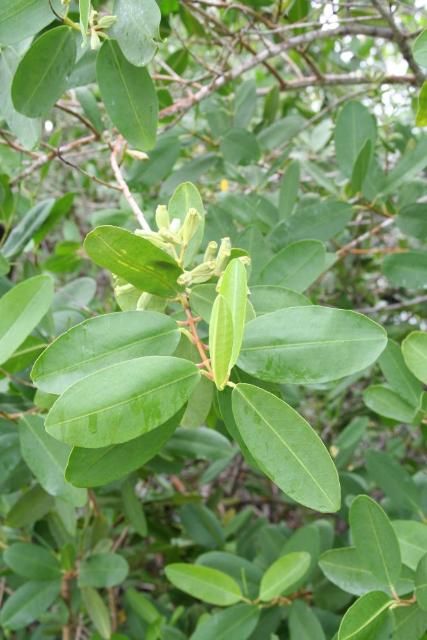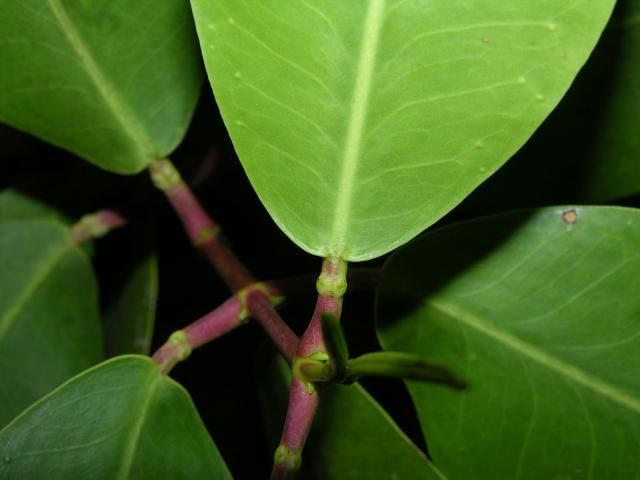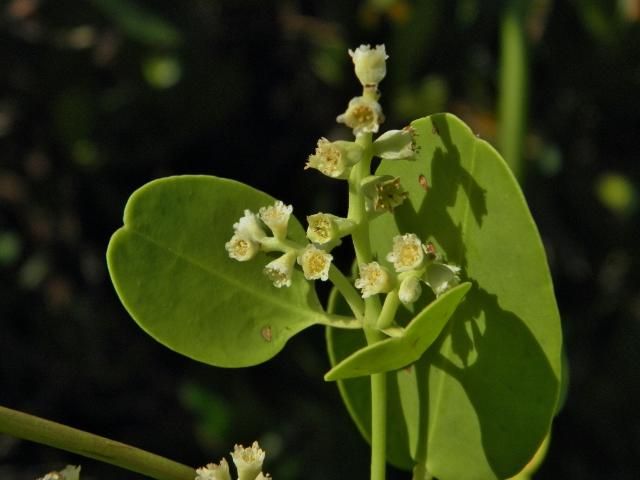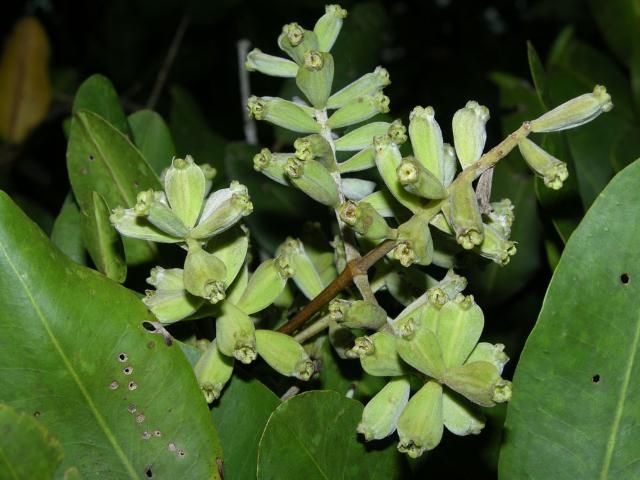Family
Combretaceae, white mangrove family.
Genus
Laguncularia stems from the Latin word laguncul, which means "a little flask," and refers to the shape of the white mangrove's fruit.
Species
The species name, racemosa, comes from the Latin root racemus, or "a cluster" in reference to the growth pattern of the fruits.
Common Name
White Mangrove
Some suggest that the common name, "white mangrove," is based on the white salt deposits that are expelled from the leaves and form surface deposits. Others speculate that the name is based on the white flowers.
Description
This native evergreen tree grows in the coastal areas of south Florida, the Caribbean, and Central America. It is generally found further upland than black (Avicennia germinans) and red (Rhizophora mangle) mangroves, and can reach heights of 30 to 40 feet in full sun. Leaves are simple, opposite, and between 1 and 3 inches long. The tops and undersides of the leaves are light green with a thick, leathery, and smooth exterior. One distinguishing characteristic of the white mangrove is the presence of two glands on the petiole just below the leaf base, where excess salt is excreted. The bark is light brown with vertical ridges and can grow a single- or multi-stemmed trunk. Inconspicuous and fragrant white flowers bloom almost year round, occurring as spikes in leaf axils or on the tips of branches. Oblong fruit pods are green to brownish and about ¾ inches in length. Each pod contains one seed and the fruit ripens in the fall.

Credit: Wildlife Travel, CC BY-NC-ND 2.0

Credit: Reinaldo Aguilar, CC BY-NC-SA 2.0

Credit: Sharpj99, CC BY-NC-SA 2.0

Credit: Reinaldo Aguilar, CC BY-NC-SA 2.0
Storm Tolerance
White mangrove is very salt tolerant and acts as a protective barrier along coastal environments, preventing erosion and damage.
Applications
Commercial/Practical
The hard and strong wood of white mangrove has been used for many purposes, from lumber and planks to fence posts and tools. The wood is particularly desirable because it's resistant to dry wood termites.
Cultural
Since early settlement, the most common uses of white mangrove were as a fuel source and for tanning leather.
Horticultural
White mangrove is not commonly used as a landscape plant because it typically grows in coastal or brackish water. However, white mangrove hedges would be a beneficial landscape addition for coastal waterfront properties because they act as a natural windbreak. In addition, white mangrove's extensive root system helps prevent soil erosion, adding a line of protection for homes of coastal residents.
Medicinal
Historically, the high tannin content in the bark of white mangrove was used as a tonic to treat fevers, skin wounds, ulcers, dysentery, and scurvy, and to prevent tumors. In addition, the leaves were used as a source of minerals.
Wildlife
Mangrove forests serve as an important breeding ground for fish, crustaceans, and birds. These species are not only necessary for the food web, but some of the crustacean and fish species support local fisheries. The spatial extent of mangrove forests has declined due to coastal development. Consequently the availability of valuable marine nurseries and rookeries has declined.
References
Austin, D. F. 2004. Florida ethnobotany. Boca Raton, FL: CRC Press.
Borror, D. J. 1988. Dictionary of root words and combining forms (1st ed.). Mountain View, CA: Mayfield Publishing Company.
Haehle, R. J. and J. Brookwell. 2004. Native Florida plants: Low-maintenance landscaping and gardening. Lanham, MD: Taylor Trade Publishing.
Nelson, G. 1994. The trees of Florida: A reference and field guide. Sarasota, FL: Pineapple Press.